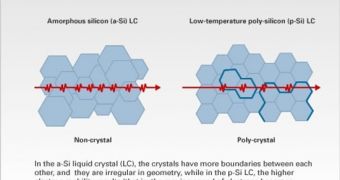A Japanese report is dishing out details pertaining to the architecture and functionality of Apple’s next-next-generation iPhone - the iPhone 6 - whereas the Mac and iPod maker is yet to impress with the launch of a fifth-generation handset.
Picked up by AppleInsider, the Google-translated Nikkan report indicates that Apple has chosen Japanese electronics maker Sharp to craft low-temperature poly-silicon LCD displays for the sixth-generation iPhone scheduled to launch in 2012.
A rough translation of the Japanese report citing unnamed sources says “Start mass production next spring low-temperature polysilicon liquid crystal panels, to be released in 2012 ‘iPhone (iPhone), 6’ is likely to be installed.”
This new liquid crystal display is said to boast a technology that reportedly allows for thinner and lighter screens.
These screens are not only thinner, but also consume less power than traditional LCD screens, we understand from these reports, as the display drivers can be mounted directly onto the glass substrate.
The iPhone 6 will thus be one of the first "system on glass" portable devices.
Thanks to these improvements, Apple will also be able to save space for additional components and functionality, as well as to improve battery life, according to the two sources.
Going by the translation, however, references to the iPhone 6 are based purely on speculation, rather than actual evidence that Apple plans to employ Sharp technologies in its sixth iPhone.
Still, the Cupertino, California-based tech giant does seem eager to continue its annual iPhone refreshes.
Some reports indicate that 2011 will see the introduction of an ‘iPhone 4S’, rather than a complete overhaul of the handset that would deserve the ‘5.0’ designation.
In addition to the faster A5 chip, Apple is believed to have also altered the screen size on its next iPhone - from 3.5 inches to 3.7 inches on the diagonal - which would corroborate reports of an edge-to-edge display design, and a narrower screen bezel.

 14 DAY TRIAL //
14 DAY TRIAL //